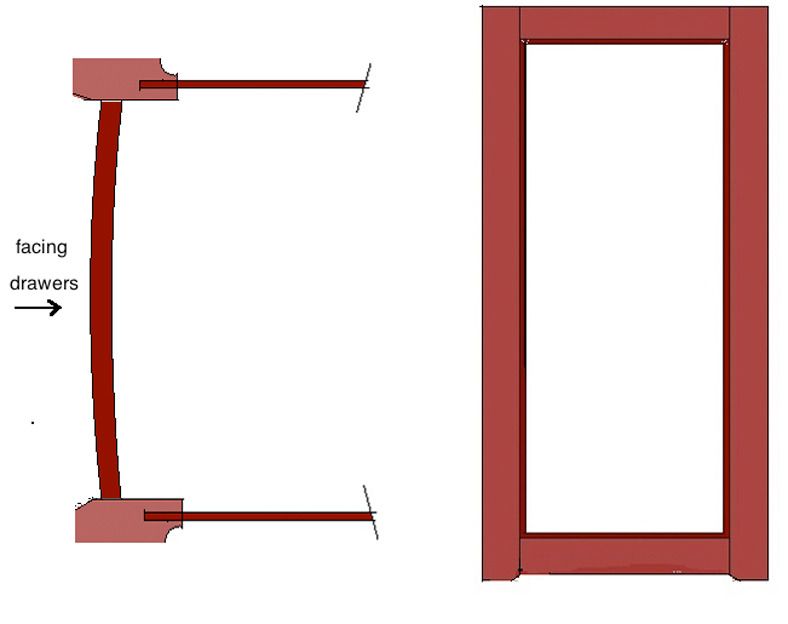CStanford":1ejnfc72 said:
Your work is so crisp and so precise, almost to a fault. A slightly misshapen bead might do it some good, as would dovetails spaced by eye and perhaps one with a gap or a 'little joiner' here or there. Sometimes an unlimited budget as to time, tools, and stock are an artist's worst enemy.
Here's to JUST A LITTLE imperfection. I'll drink to it.
I also think you missed an opportunity with your stock selection to do something very special.
To what extent was your wife involved in the design brief? I'm more interested in your design process than anything else. The woodworking itself will go well, indeed is going well, for the reasons mentioned above.
Hi Charles
Is that a compliment or a criticism? :lol:
Trust me, there are flaws. In any event, they are not deliberate. I think that the notion of deliberately making mistakes, or leaving plane tracks as "evidence" of handwork, is silly. One builds as precisely as skills allow, and handwork will naturally lead to some imperfections - just because we are not machines.
It is all relative.
A few weekends ago I attended a workshop on drawer-making. I do quite decent drawers, but the demonstrator is a high-end furniture maker, and I wanted to see how he went about the slips and muntin. He is also a judge at the annual Woodshow, where I have had pieces entered the past couple of years, and I was hoping to learn a little about what he considered important (I do not build for competitions, but was curious what is considered desirable as I thought some of the results at the last show were not what I would have chosen).
Now if you consider my work "crisp", then you should see his! It is evident that he expects others to produce results at the same rarified level he reaches (with a combination of power and hand tools). His tolerances are fractions of mm. Is this excessive? I do not know because he gets paid very well for this level of work. He is not churning out pieces - a drawer can take all day to build.
With regards stock selection, what would you do differently? What opportunity is it that you think I missed?
Design? I was looking for something that was softer in outline than a hard-edged chest of drawers. I played around with a fews mock ups first, trying to get a feel for it in the alcove in our bedroom ..
It evolved ...
Wood? It needed to blend in with other pieces I have built over the years, such as our bed in Jarrah ..
The main section is Makore (an African wood), which is a little like Mahogany but with the reddish-blown tones of Jarrah. It has a less dramatic figure than Jarrah, but lots of interest (see one of the panels in an early chapter). The Jarrah is figured, and I think that it will make complementary statement to the Makore. The drawers will curve, and be clean-lined without handles (opening on hidden Blum Tip-On buttons). I am trying for a stream-lined clean look.
Makore and Jarrah ...
Getting going with this project was delayed by my fear of working with Makore, which is high on the irritation ladder. I have taken a lot of precautions with dust extraction. So far so good. The Makore is exceptionally hard on steel, dulling everything 2-3 times as fast as Jarrah, which is pretty abrasive in its own right.
Your ideas are very welcome.
Regards from Perth
Derek







































